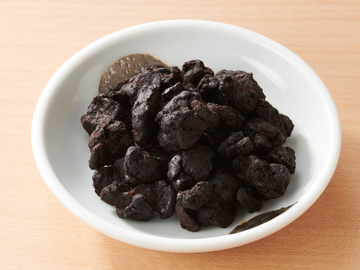Processed bean products

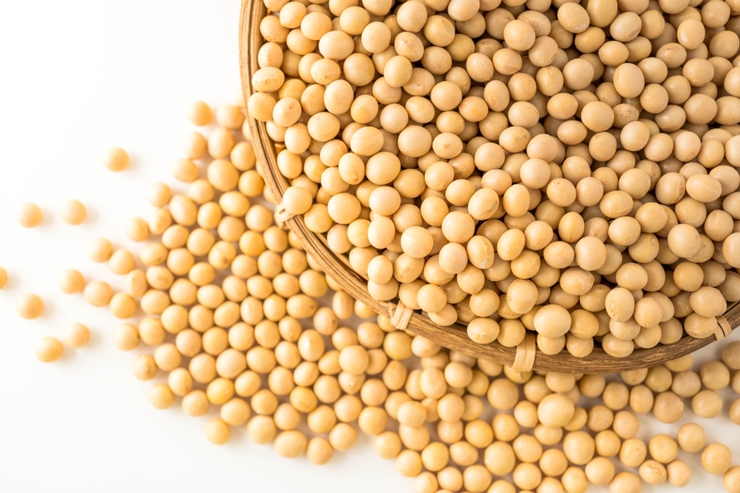
History and Culture
「Gokokuhojo」 means a bumper crop of five kinds of cereals. In Japan, "gokoku," which means five kinds of cereals in Japanese, refer to rice, barleys and wheat, foxtail millet, beans, and common millet (or Japanese millet according to another theory). In Japan, soybeans are an important crop, and have a long history of use. Soybean growing started in China in 3000 B.C. It is believed that soybeans were introduced to Japan almost 2,000 years ago.
Countries in East Asia, including Japan, and Southeast Asia have used soybeans in different product forms as an important source of protein by devising their own methods. Typical Japanese soybean products include tofu, aburaage, yuba, soybean flour, soybean milk, bean sprouts, boiled soybeans, and fermented seasonings or foods such as miso, soy sauce, and natto. All of these are familiar to any Japanese, and it seems that soybeans are deeply rooted in the Japanese diet.
Characteristics and Types
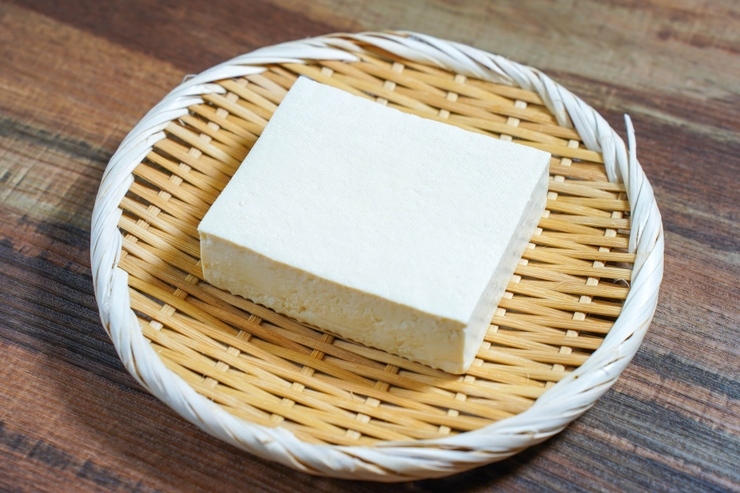
[Tofu, a typical processed product made from soybeans]
Tofu was originated in China and introduced to Japan together with Buddhism. It is believed that tofu was introduced to Japan in the Nara era, when various cultures including food cultures and technologies were also introduced. It is said that tofu was a food for upper-class people such as nobles and priests and came to be eaten commonly by ordinary people in the Edo era. Today, tofu is divided roughly into two types: one is coarse-grained tofu called "momendofu" and another is fine-grained tofu called "kinugoshidofu." These are different in feelings on the tongue, hardness, and nutrients contained. In the process of producing momendofu, water is squeezed out of it. As a result, it is moderately hard, and contains larger amounts of protein, fat, calcium, iron, and dietary fiber than kinugoshidofu because soybean components are condensed. On the other hand, kinugoshidofu, from which water has not been squeezed out, is characterized by its soft texture, and contains larger amounts of potassium and vitamin Bs than momendofu.
"Shimadofu," a kind of momendofu handed down in Okinawa Prefecture, is tofu that is even firmer than ordinary momendofu.
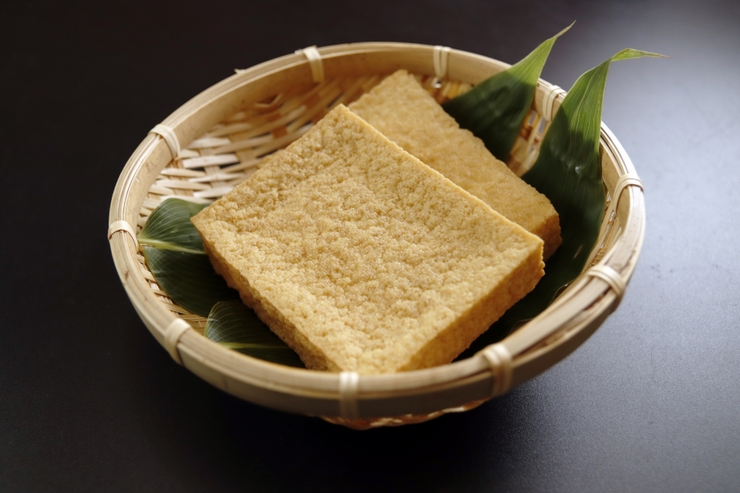
[Processed products made of tofu]
Containing a large amount of water, tofu is fragile and easily spoils. Frying tofu in oil or drying it makes it easier to handle, increases its shelf life, and changes its taste or texture.
Aburaage, atsuage, and ganmodoki are made by frying tofu in oil, and kori-dofu is made by drying tofu. Kori-dofu is freeze-dried tofu, and has a unique texture that is different from original tofu since the tissue of tofu is changed by freeze-drying. It is called differently. For example, it is called "koyadofu" in the Kansai region, and "shimidofu" in the Tohoku region.
Yuba is written as "湯葉" or "湯波" in kanji. It is a film formed on the surface of soybean milk when it is heated continuously, and is a food made only from soybeans, into which all soybean components are condensed. Yuba may be eaten raw, and is also available in dried or molded forms.
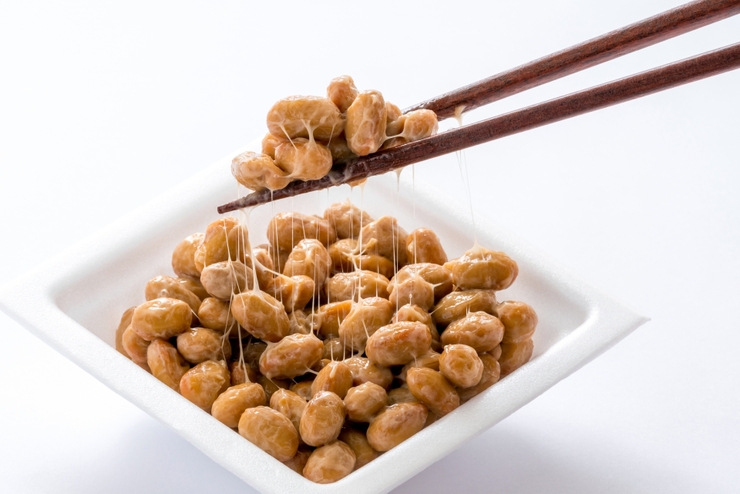
[Fermented foods made of soybeans]
A typical fermented food made of soybeans is natto. Natto is divided into itohiki natto and shiokara natto. Itohiki natto is a salt-free soybean product made by fermenting boiled soybeans with bacillus subtilis natto. On the other hand, shiokara natto, which is also called hama natto or tera natto, is made by inoculating Aspergillus oryzae in boiled soybeans to make soybean koji, soaking the koji in salt water to allow lactic acid fermentation to take place, and then drying it.
Production Methods
Tofu is made by heating pulverized soybeans together with water, removing fibers and other components as "okara," and solidifying the obtained soybean milk with a coagulant. Momendofu is made by solidifying soybean milk by adding a coagulant, breaking the soybean curd, putting it in a molding box, squeezing out water under pressure, and then solidifying the curd again. On the other hand, kinugoshidofu is made just by solidifying soybean milk thicker than for momendofu by adding a coagulant.
Aburaage is made by frying thin slices of tofu in oil and drying the surface. Atsuage is made by frying thick slices of tofu at once in high-temperature oil, and the inside is still in the form of tofu. Ganmodoki is made by breaking tofu, mixing it with vegetables and other ingredients, molding the mixture, and then frying it in oil.
Relationship with Regions
Having been introduced from China, tofu is believed to have originally been hard tofu like shimadofu of Okinawa Prefecture or katadofu handed down in Hakusan City of Ishikawa Prefecture, Gokayama City of Toyama Prefecture, the Iya region of Tokushima Prefecture, and other regions. Gradually, ways of producing smooth tofu that feels good on the tongue began to be devised, and finally, today's kinugoshidofu was born. In addition, tofu made by wrapping tofu firmly in a straw wrapper called "warazuto" and boiling the wrapped tofu in hot water has been handed down under the names unique to regions such as tsutodofu (Fukushima Prefecture), komodofu (Ibaraki Prefecture), sukimadofu (Okayama Prefecture), and subodofu (Kumamoto Prefecture), and eaten at traditional events.
Tofu castella and tofu kamaboko, which are made by adding seasonings and starch as a binding agent to broken tofu, further adding sugar or fish paste, respectively, to the mixture, and molding into a certain shape, have been handed down in Akita Prefecture and Nagasaki Prefecture, respectively.
Contribution to Sustainability and SDGs
Amid calls for food sustainability, great expectations are placed on soybeans as a plant-derived source of protein. Recently, "soybean meat" has been attracting attention. Japanese processed products made from soybeans such as tofu and natto have been eaten as an important source of protein since the days when meat eating was not common. (13: Climate Action)
Reference
Masaharu Horii, Kazumune Hashizume, Ken Watanabe, Hiroshi Ito, and Takeshi Shirakawa, edited by the Japanese Society of Traditional Food, "Nihon no Dento Shokuhin Jiten" [Encyclopedia of Traditional Japanese Food], Asakura Publishing Co., Ltd., p.51-82


